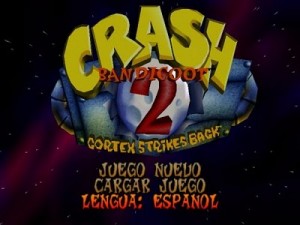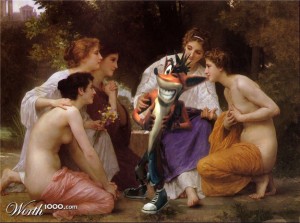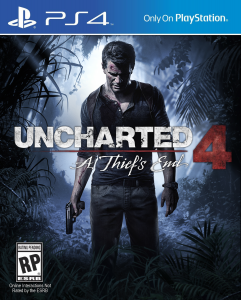 Title: Uncharted 4: A Thief’s End
Title: Uncharted 4: A Thief’s End
System: PS4
Genre: Story based Climber/Shooter
Developer: Naughty Dog
Publisher: Sony Computer Entertainment
Date Played: May 2016
Rating: Best looking game ever made!
Of course I had to play and review Uncharted 4. It pretty much goes without saying. My collector’s edition box came on launch day and I finished it over the next week. It probably took me about 20-24 hours as I take my time and I’m very thorough. I collected about 95% of the treasures and almost all the journal entries/extra convos etc. So let’s jump into it, topic by topic:
Story 8/10 and character 9/10. The UC4 story itself is superficially generic, involving the return of Nathan Drake’s long lost brother Sam, which precipitates Nathan leaving his “retirement” and (temporarily) Elena. Nathan is thereafter thrown into pursuit of the “biggest pirate treasure in history,” an adventure that takes him to Panama, Louisiana, Italy, Scotland, Madagascar, and (largely) Captain Avery’s nearby pirate island and its requisite “lost city.” There are also a couple flashbacks to the Drake boy’s younger days. Mostly the story is an excuse for modern pirate adventures and more importantly, character development between Nathan and Sam & Elena. This development, basically constructed from constant back and forth between the (usually two) party members seamlessly accompanies nearly all of Uncharted‘s gameplay.
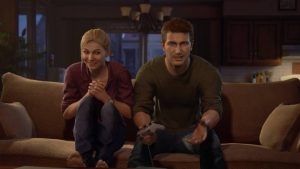
Elena, like my wife, lets Nathan play video games
In fact, Drake is almost never alone, and for good reason. This “buddy system story telling” at Naughty Dog was born out of Jak & Daxter. The idea with Daxter was to provide the “witty repartee” to help liven up the game, an idea we basically got from Disney movies and their endless string of comedic sidekicks. They intervening 15 years has seen the concept grow in sophistication, but the core idea is the same. In UC4, the dialog is not just funny (although it often is), but genuinely character building.
UC4 isn’t as somber, emotionally wrenching, or deep as Naughty Dog’s other similar-genre hit, The Last of Us (TLOU), but the level of character interaction between Drake and his family does bring out real warmth and personality. Basically, the game lives up to being a Raiders / Die Hard type summer blockbuster. It’s kinda about the action, but really excels because you care. Please note that this depth is rarely present in video games (does Call of Duty evoke any emotion?) or even summer blockbusters where creators too often believe 40 minutes of slamming through buildings develops character.
So while UC4 is not the story/character masterpiece that is TLOU — it’s also a lot lighter hearted.
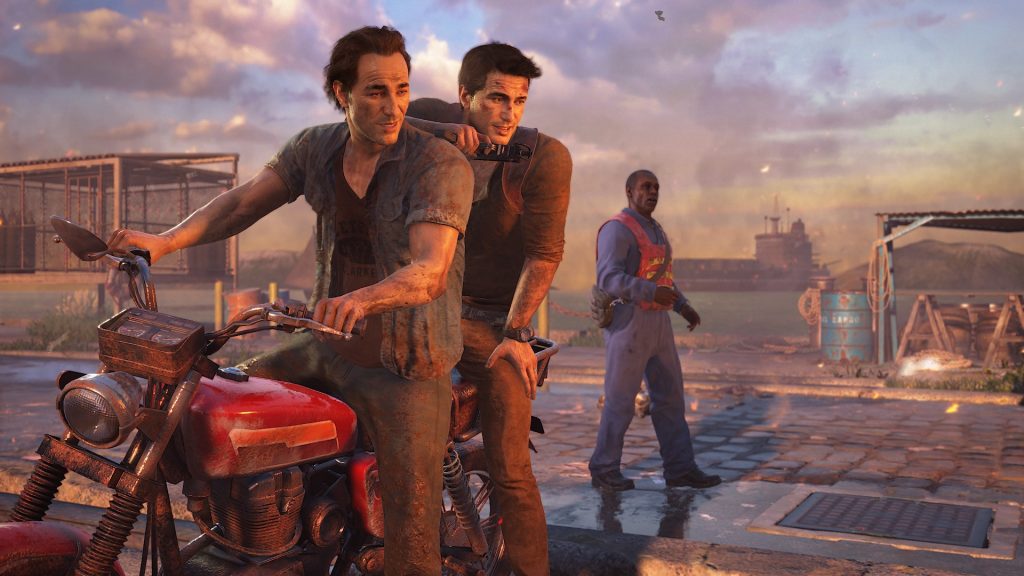
That Sam is just a bit more selfish than Nathan is telegraphed by his slightly shiftier features
Voice Acting & Animation 10/10. Taking into account the current state of technology, video game character rendering just doesn’t get better than UC4. I’m sure Sony’s eventual PS5 and Naughty Dog’s eventual PS5 title will improve on it, but barring that, the characters just look and move superbly. The voice acting is really stellar too, particularly given the sometime “cheese” factor of the pirate story. The quality of the writing and delivery sell it time and time again.

The Drake brothers have very strong forearms
Graphics 11/10. The elephant in the room. No, the titanosaur argentinosaurus huinculensis in the room is how gorgeous the game looks. UC4 isn’t the most stylized game ever, but for hands down gorgeous “realistic” graphics there is no better looking game yet made. It’s even better looking than Witcher 3: Blood & Wine (which is pretty gorgeous). The UC4 graphics aren’t really that naturalistic either, as the color and detail are pumped up in a sort of HDR hyper-realistic way. It’s just not that obviously stylized. My good friend Erick Pangilinan (he’s the art director!) describes it as “hyper reality but very balanced in terms of detail. Every camera shot is very directed in terms of gameplay clarity and artistic composition. Following a lighting color script was also key to tie in the mood and story beat.” The textures and lighting and everything else are just so ridiculously pretty, which because of a technique called physical base rendering allows the materials to respond to light properly, making them consistent and realistic (and therefore more awesome).
Let us not forget the amazing view distances, epic scenes, crazy mud/water/everything else type effects. Oh, and the animation, which while not 100% lifelike is about 98% — and therefore about as good as has ever been done. Plus did I mention all the insane shaders and little details. The look of the game, it’s stunning slickness, and jaw-dropping beauty actually makes it more fun to play. Seriously, even the corner of some cave is gorgeous. Frame rate is 30 hertz in Single Player. They couldn’t really squeeze this crazy look into 60 on the PS4. It doesn’t bog much, so gameplay isn’t affected. Sure it would be a little more fluid at 60, but there are a lot of uglier games that run at 30 (or less).
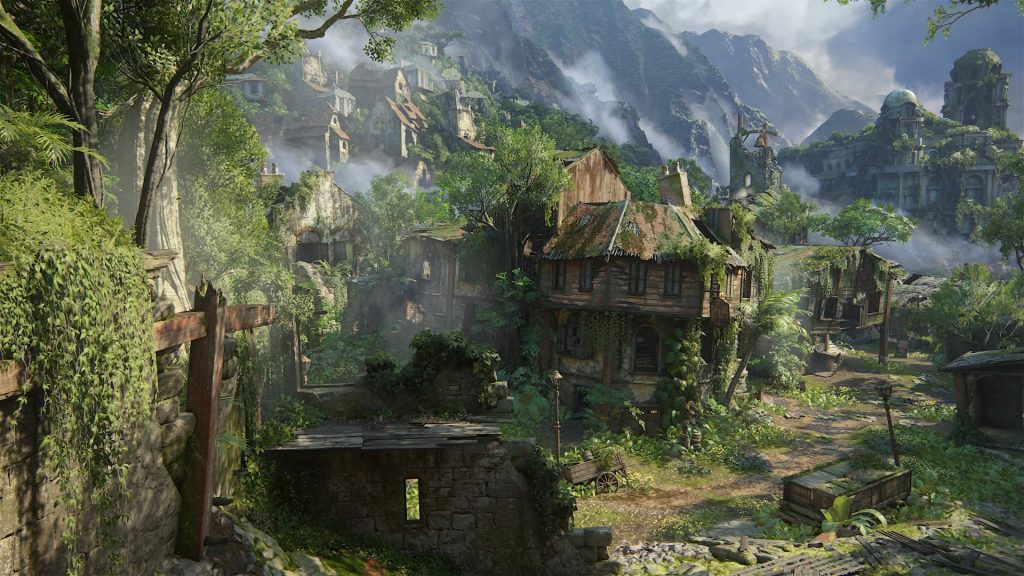
Yeah, that’s what the game looks like
Controls 9.5/10 and core mechanics. I’m a control guy. I programmed most/all of the controls for the Naughty Dog games before Uncharted 1 so I know a little bit about video game control :-). The UC4 controls are great, particularly the climbing controls. Basically, the controls break down into a couple types: Running/jumping/climbing, shooting, hand to hand, and vehicle. I’d say the basic “moving drake around” and climbing controls are 11/10. Some of the new mechanics, like the grappling hook, slides, and piton integrate spectacularly. The way in which Drake reaches for handholds and you can subtly feel them out: perfect. The shooting and “hiding” controls are maybe a 9/10, as is the driving. It all responds well and some elements like the slipping and sliding of the jeep in the mud are crazy good. Occasionally I’d pop out of stealth oddly when trying to shift positions. The hand to hand fighting is more like a 7/10. It’s fine, and the animation is gorgeous, but it doesn’t have the visceral contact quality of say, Bloodborne, where you can confidently fight multiple opponents at the same time. There is an increased emphasis on stealth gameplay, possibly coming over from TLOU. I liked hiding in the grass and quietly taking guys out, and to this UC4 adds pulling and kicking guys off ledges and out of windows. All are quite satisfying when you pull it off.
The fighting / shooting gameplay isn’t immensely varied. There aren’t that many enemy types. Basic mercs, armored mercs, sniper mercs, maybe a few other similar types. This ain’t like Dark Souls III with tons of highly varied fantasy monsters (I love me some fantasy monsters). So enemy variety gets a 3/10. Enemy AI is excellent though.
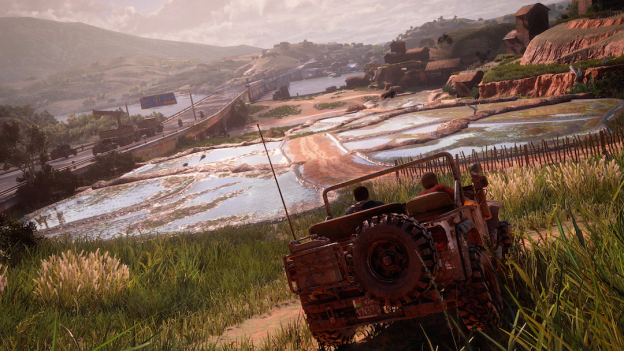
You can actually slide around in that mud!
Gameplay balance. Naughty Dog describes Uncharted as a “summer blockbuster you play” and this is fairly accurate. It’s a slightly throwback Spielberg-style Indian Jones / National Treasure blockbuster at that. But the actual gameplay is divided between exploring, climbing, puzzle solving, driving, moving along the plot, and a mixed stealth & gun fighting gameplay were you beat up on clusters of mercenaries. The balance between these activities has been slightly adjusted from previous Uncharted games. The driving (boat and jeep) has been added, but the percentage of climbing seems to have been increased and shooting reduced. I really prefer climbing / exploring to fighting in this particular style, so that’s all good by me. Also, it seems that there is more “moving the plot along” stuff, by which I mean relatively trivial things you “do” (like dragging a water bucket down to the puddle to fill it up) that is needed to move along the plot. Interestingly, these tasks, as mundane as they are, do add to the verisimilitude. They almost “feel” like puzzle solving, even though the game usually tells you exactly what to do. That being said, there are half a dozen real puzzles in the game, along the lines of a more complicated Raider‘s map room. You can either “puzzle” them out or google them.
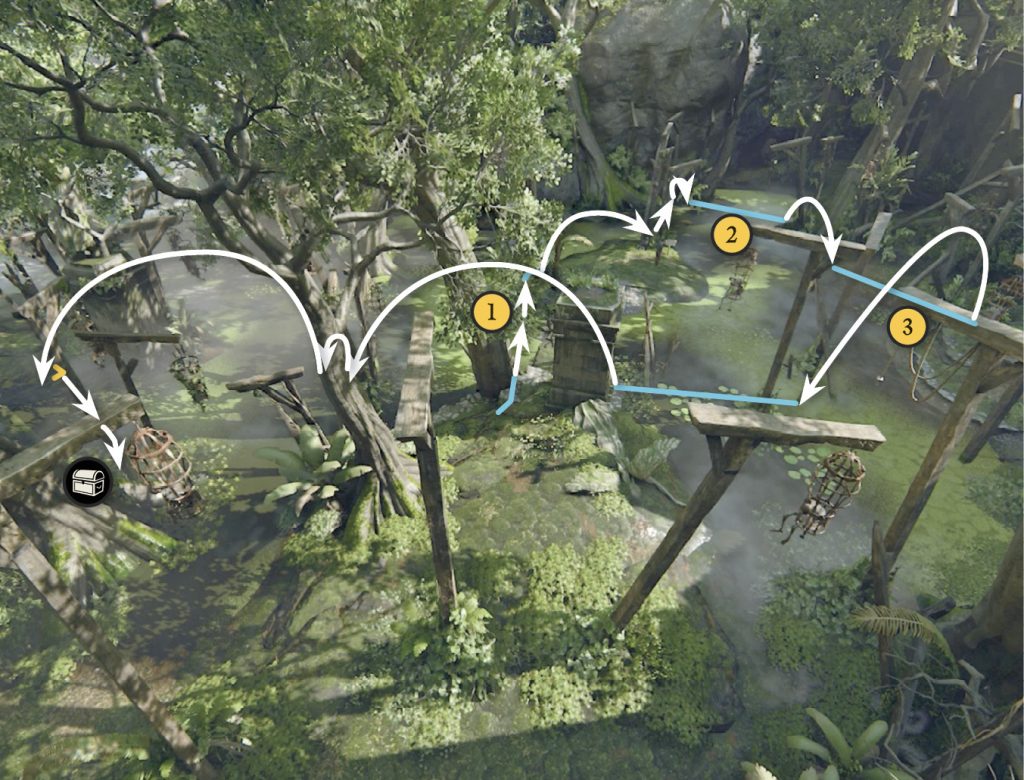
The climbing can really get complicated
It’s also worth noting how this balance is different than in TLOU, which has a lot more stealth, no formal puzzles, and a much less “forgiving” hit and recovery system. TLUO also has collecting materials and crafting useful “tools” like grenades, shivs, healthpacks, etc. and a rudimentary RPG system where you can level up weapons and certain abilities. I really like collecting and “leveling”, and it gives you a reason to explore the gorgeous environments, so one of my biggest “beefs” (in the context of a fabulous game) with UC4 is the scarcity of pickups. Basically, there are the treasures, and these are pretty few and far between and often rather hidden. Naughty Dog deliberately uses this as a differentiation point from TLOU, but I miss collecting. There is also very little weapon progression in Uncharted. You grab what guns are at hand. They all kinda work. I usually take whatever has the most ammo, generally staying away from the grenade launchers and the like. There are some bigger guns toward the end like the RPG and Gatling gun, but they don’t have significant strategic use. Overall, the choice of weapon in Uncharted is far less relevant than it is in TLOU, where the varied characteristics are almost mandatory choices for different encounters. Only on a couple occasions in UC4 do you actually NEED to be using a high impact weapon (shotgun) or a sniper rifle. And there exists no choice of knife, bow etc. All stealth kills are by hand (or foot).
Interestingly, while UC4 still has levels in a dim sort of way, it pretty much eschews the whole boss concept. At most, there is one at the end. And there are big set piece levels like the truck chase, but there even the single boss isn’t exactly like Bloodborne or Dark Souls III‘s 15-20 massive traditional bosses. This isn’t a game about repeatedly dying so you can figure out a difficult series of reactions to lethal moves.
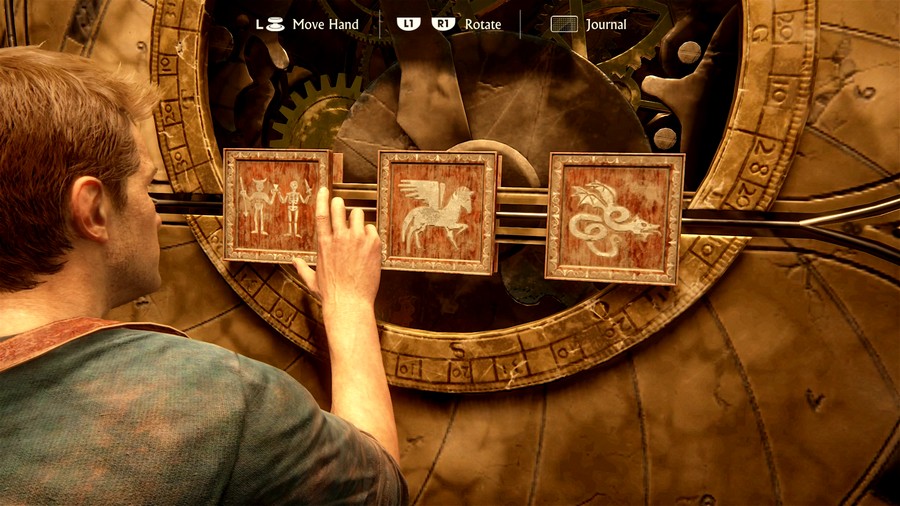
Pirates love puzzles!
Sound 10/10. The sound is just seamlessly there in UC4. There is just a LOT of it, and it just sells this giant adventure as you’d expect. The music is right on style. Don’t underestimate how much work this was.
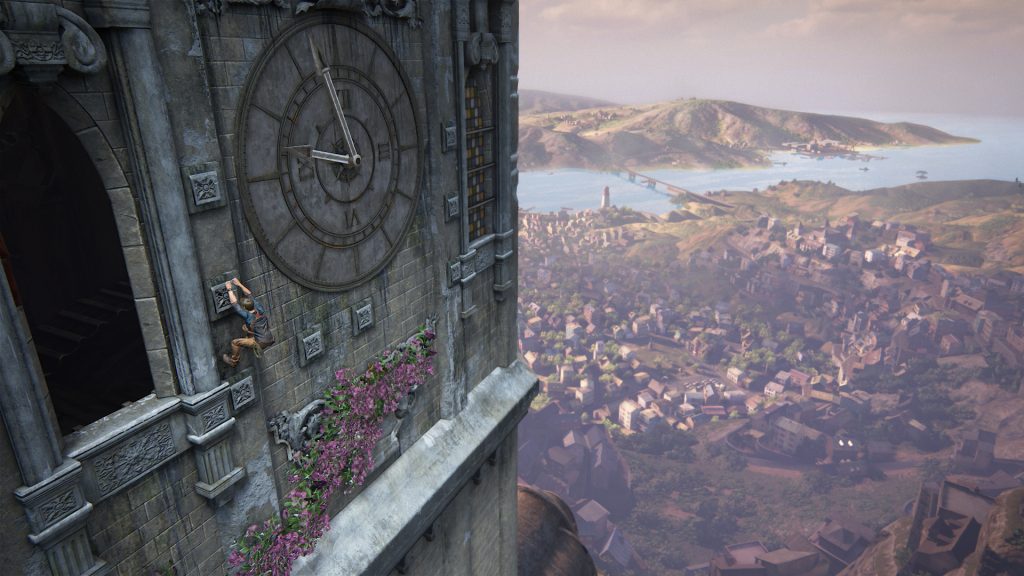
Nathan likes to be “on time”
Technology 11/10. It’s easy to just say that UC4 is the best looking video game ever, and that the animation and control, and shaders are perfect (given the current state of PS4 tech). They are, but a lot of people had to work really hard to make that happen. And the kind of tech that squeezes that much performance out of the same hunk of hardware that all those other PS4 games run on is impressive — which means impressive programmers. Some Naughty Dog programmer(s) had to code all those cool rope and jeep and mud physics, allow for the ridiculous shader passes, sit there with the artists and work out the luminous shadows and lighting, blend all the different joints, wrangle the data so the load times are barely there, etc etc etc. Most PS4 games have abysmal load times! The power of current machines and engines has sometimes allowed all that vast amount of code to slip onto the perceptual back burner, but I’m sure it’s just as hairy as it was twenty years ago in the Crash Bandicoot era. Which brings up:
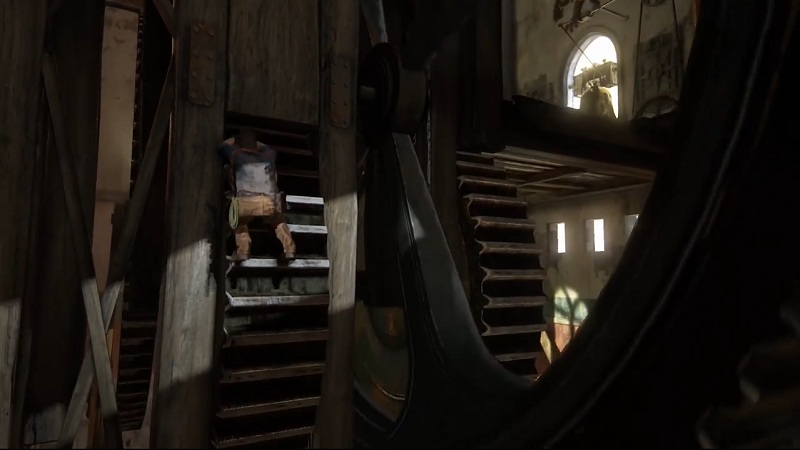
Holy Mickey Mouse: Castle of Illusion — gear climbing!
Crash Bandicoot revival. Idea 12/10. Execution 9/10. Just having a bit of Crash in here was so cool and so apropos — particularly given the Indiana Jones nature of Uncharted and obvious reference of the boulder level. It also must have been a helluva lot of work. Crash‘s code and assets are incredibly complicated. I don’t even know if they emulated it or recoded it. I suspect the later as per the 1 point execution ding, which is that the “feel” is just slightly off. The game inside the game looks and sounds pretty much exactly right — except maybe for Crash’s spin which looks a little weird — but the control is just slightly funny. I even went back and popped in the real deal to check. True, this is Crash 1, and Crash 1‘s controls are significantly stiffer and harder than Crash 2 and 3 (where reworked logic and the analog stick vastly improved them), but it still feels just a tiny nitpicky bit different. [ update 6/6/16: Neil Druckmann tells me that one guy recoded the whole sequence (using the original art/sound assets). No wonder it’s just a touch different, but amazingly impressive getting it so close. ]
Multiplayer. I haven’t tried it. Not usually that into death-matches, but that’s just me. I like co-op.
Overall 9.5/10. Uncharted 4 is a spectacular game, and any PS4 owner that doesn’t play it better be the kind that only buys sports games or have a severe allergy to pirates. It’s a solid 20 hours of ridiculously high production value fun. It’s spectacularly polished. It’s the best looking video game yet made. It’s a romping good story and better than most blockbuster movies (which kinda suck these days). It’s just not quite as much a ground breaking masterpiece as TLOU which is the best “story game” made so far. Nor actually to my taste does it offer as much fantasy creeptastic evil challenging monster killing gameplay as equally masterful but less polished Bloodborne. But that last game is far more niche and I’m a dark fantasy lover, so consider me weird. UC4 is like Back to the Future in terms of its mastery: perfect execution and awesome entertainment, just not the deepest thing in the world.
For more video game posts, click here.
| If you liked this post, follow me at:
My novels: The Darkening Dream and Untimed |
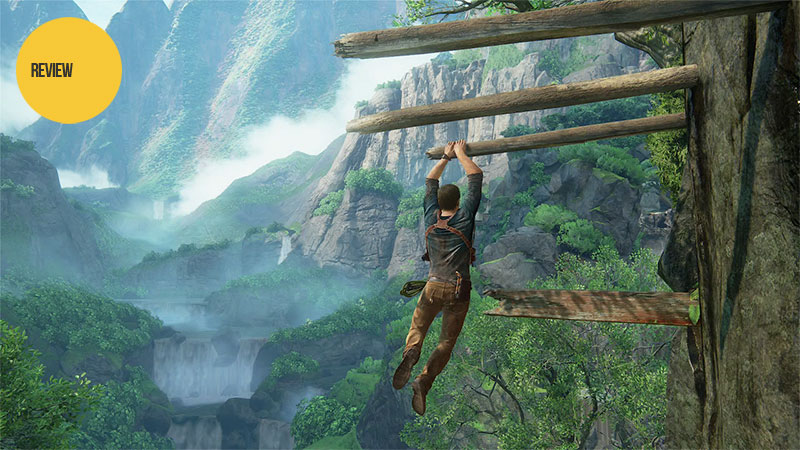
I guess Nathan had “fear of heights” surgically removed

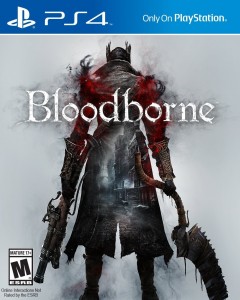
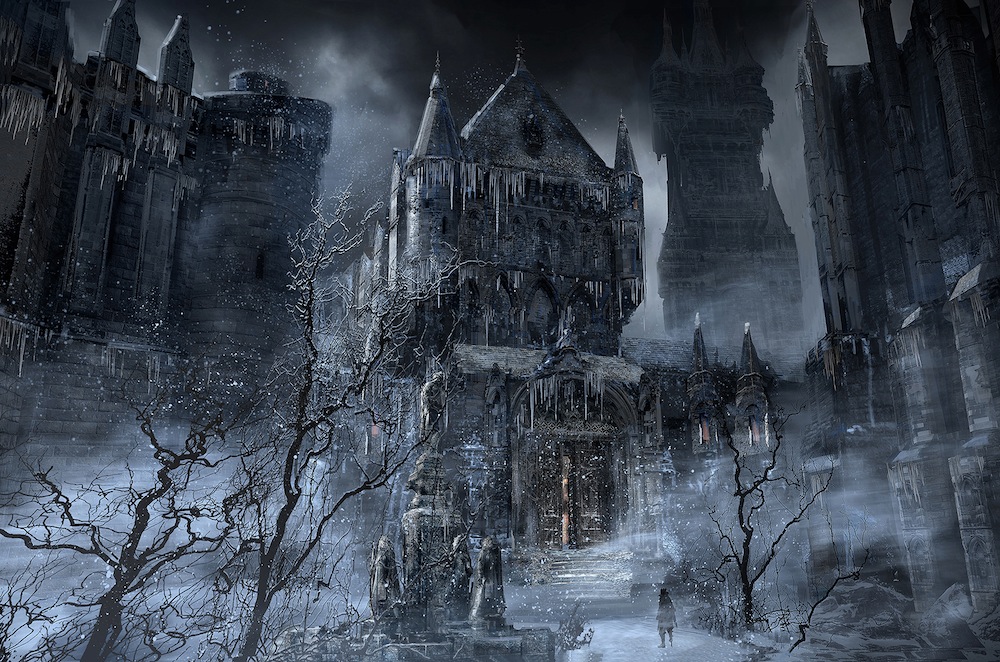 It’s just so deliciously creepy and mythological. Really. Dark Souls has a cool world feel and mythology, and there is significant overlap, but Bloodborne really takes it all to the next level, elevating itself above mere video game (and it rocks in that department) to become a genuine work of art. Surely no chipper happy landscape painting, but a dark broody bloody 1911 horror novel of a game.
It’s just so deliciously creepy and mythological. Really. Dark Souls has a cool world feel and mythology, and there is significant overlap, but Bloodborne really takes it all to the next level, elevating itself above mere video game (and it rocks in that department) to become a genuine work of art. Surely no chipper happy landscape painting, but a dark broody bloody 1911 horror novel of a game.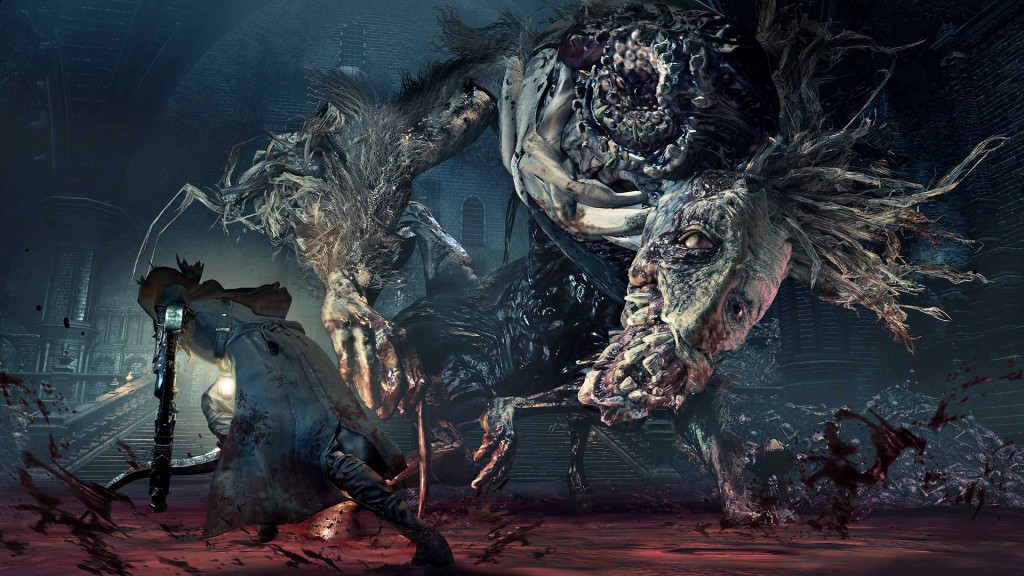 Which brings us to more fantastic points about Bloodborne, the gameplay. The sneaking around and the combat is really quite excellent. It’s extremely difficult, and very skill oriented, particularly the many many varied bosses. But the mechanics are intensely visceral and satisfying. The combinations of feel, exceptional animation, physics/collision driven hand to hand, and amazing art and sound design all serve to enhance the effect. Every strike is satisfying.
Which brings us to more fantastic points about Bloodborne, the gameplay. The sneaking around and the combat is really quite excellent. It’s extremely difficult, and very skill oriented, particularly the many many varied bosses. But the mechanics are intensely visceral and satisfying. The combinations of feel, exceptional animation, physics/collision driven hand to hand, and amazing art and sound design all serve to enhance the effect. Every strike is satisfying.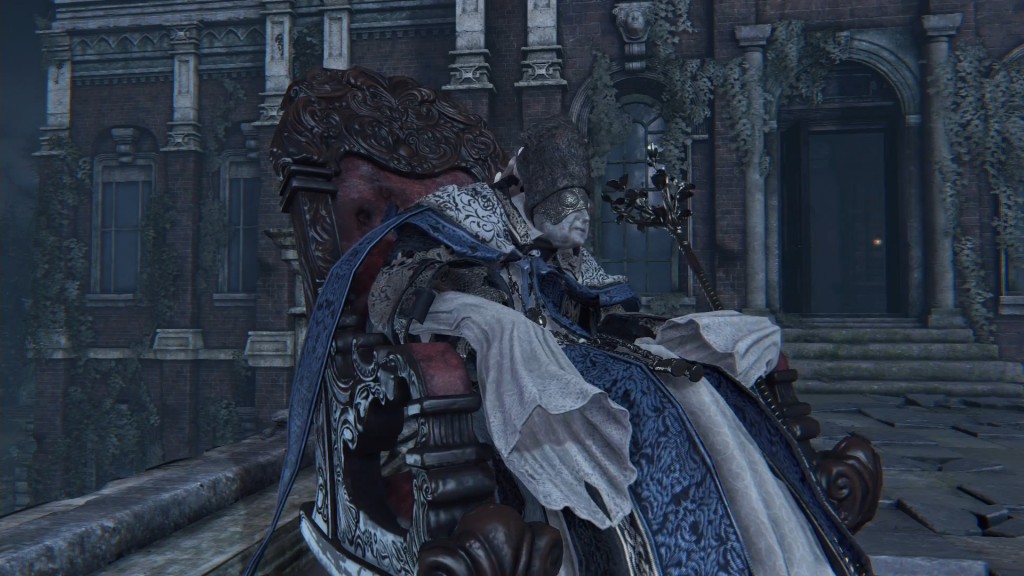 The meta game is excellent too. At first I though it cryptic and the investments of blood echoes into levels of little apparent goal. However, I found that Bloodborne is actually a satisfyingly easy game to grind. Having trouble with a boss? Well, there are two options: read up on strategy and practice, or level up and practice — actually, you pretty much have to do both. The game doesn’t discourage a bit of grinding, and rarely makes it take that long. Plus the combat is so satisfying that even killing a room full of monsters over and over again is fun. 15 minutes of grinding will often earn you a level or two. Grinding up weapon upgrade “stones” and gems works pretty well too.
The meta game is excellent too. At first I though it cryptic and the investments of blood echoes into levels of little apparent goal. However, I found that Bloodborne is actually a satisfyingly easy game to grind. Having trouble with a boss? Well, there are two options: read up on strategy and practice, or level up and practice — actually, you pretty much have to do both. The game doesn’t discourage a bit of grinding, and rarely makes it take that long. Plus the combat is so satisfying that even killing a room full of monsters over and over again is fun. 15 minutes of grinding will often earn you a level or two. Grinding up weapon upgrade “stones” and gems works pretty well too.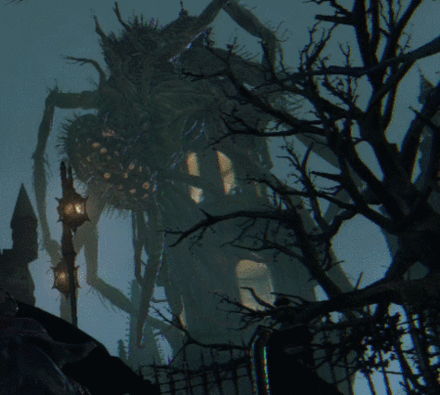
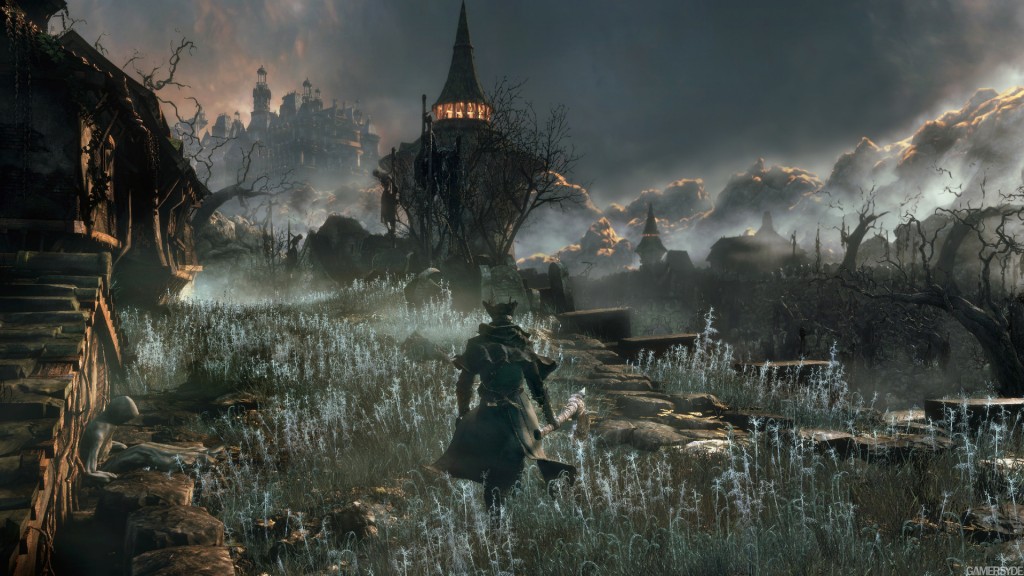 Let’s talk about atmosphere. Bloodborne is Japanese Gothic, with a kind of vaguely european, vaguely 18th or 19th century vibe. Creepy cities, leather, top hats, blunderbusses, werwolves, and all that. It’s a gorgeous gorgeous kind of dark game. Excellent and moody visuals and soundscape.
Let’s talk about atmosphere. Bloodborne is Japanese Gothic, with a kind of vaguely european, vaguely 18th or 19th century vibe. Creepy cities, leather, top hats, blunderbusses, werwolves, and all that. It’s a gorgeous gorgeous kind of dark game. Excellent and moody visuals and soundscape.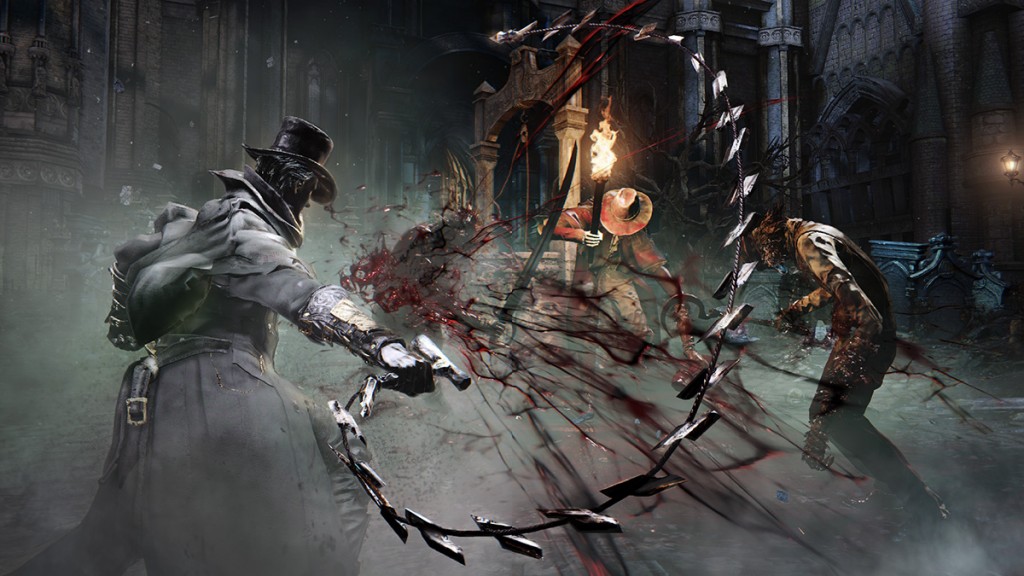
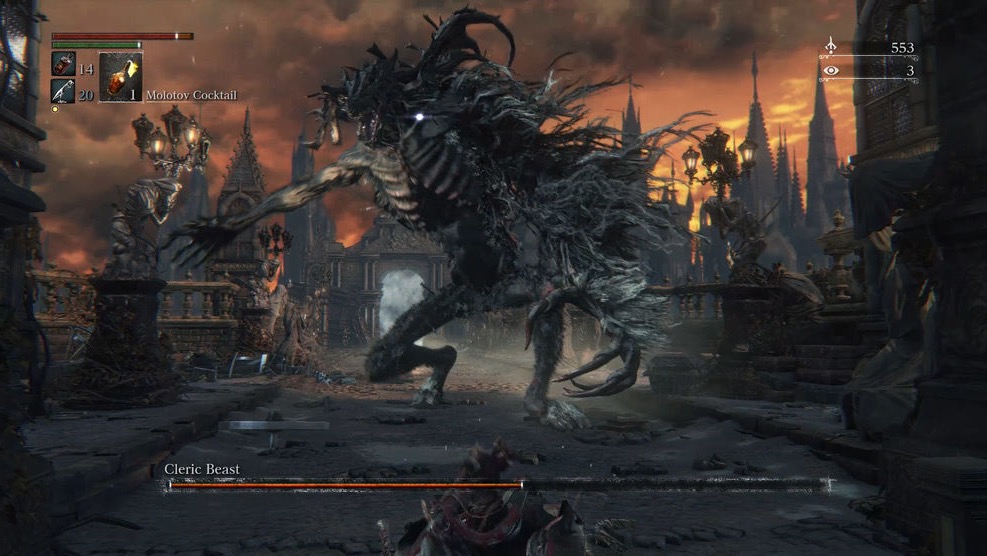
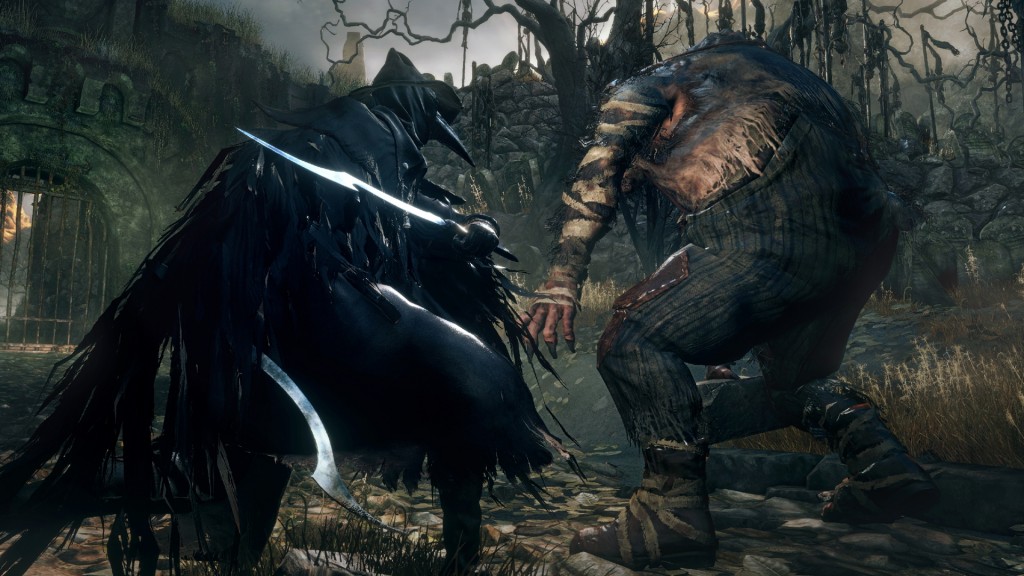
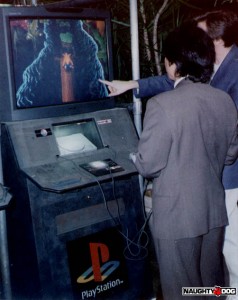
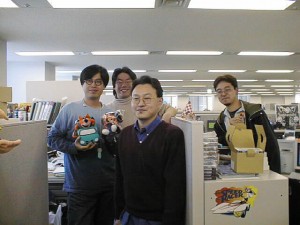
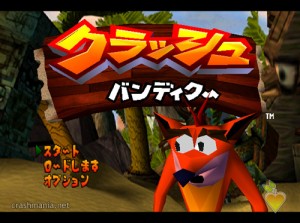
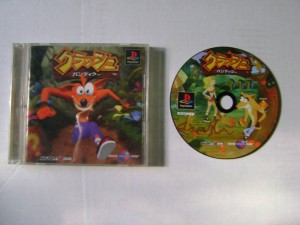
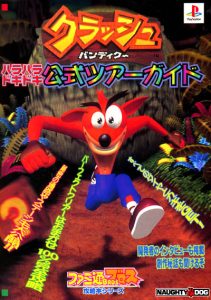
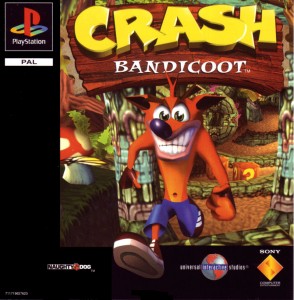
![Crash_Bandicoot_Spanish_Dvd_Slim_pal-[cdcovers_cc]-front](http://all-things-andy-gavin.com/wp-content/uploads/2012/01/Crash_Bandicoot_Spanish_Dvd_Slim_pal-cdcovers_cc-front-300x211.jpg)
